June 2013 – Volume 15, Issue 10: Waste Management
IN THIS ISSUE
Flanigan’s Eco-Logic
Trash: The Big Picture
Trash and Recycling Facts
Waste Composition Studies
The History of Styrofoam
Foam Food Packaging
Recycle Bank
New Jersey at a Gigawatt
The San Onofre Nuclear Plant
World Primary Energy Demand

Flanigan‘s Eco-Logic: Brian’s World of Waste Management
Our friend Brian dropped in for lunch last week. So great to see him and to talk trash.
Brian used to be at EcoMedia, the West Coast Brian that is, “hanging ten” in Manhattan Beach. He’s now an account manager for Waste Management in its 400-person-strong Sustainability Solutions group. Clearly proud of his work at Waste Management, Brian and his colleagues are guiding a massive organization to the green.
Waste Management is the largest waste provider in the country. WM has the largest network of recycling facilities, transfer stations, and landfills in the industry, hundreds of them. It’s also the biggest recycler in the country, with 12 million tons recycled in 2012. It expects that to grow to 20 million tons by 2020. And now WM is in the “sustainability space,” advising clients on how to green their operations from soup to nuts. This work has ranged from LEED consulting to zero waste to hosting a conference on innovative packaging solutions.
Brian’s energized by being part of the part of Waste Management force of 42,000 employees. Throughout the lunch we talked trash, diversion rates, and reclamation rates. After lunch we talk about what kinds of solutions that WM is providing its customers. And what about the corporate mentality? Is it in the trash business – facing classic lost revenue issues — or the solutions business?
Waste Management is all green; a mission is “to maximize resource value while minimizing and even eliminating environmental impact.” It claims to be “the largest environmental solutions provider in North America.” In 2012 it served more than 100 Fortune 500 companies and 150 different communities, with 20 million customers in the United States, Canada, and Puerto Rico.
Brian told us about WM’s “Trash to Fuel” program, tapping landfill methane to run its trucks. One-third of its California fleet uses Liquefied Natural Gas (LNG) derived from the decomposition of organic wastes at its landfills. In 2011, it introduced its 1,000th natural gas powered truck.
Waste Management is also squarely in the renewable energy business, capturing methane at landfills and then generating power on site. WM produces twice as much power as the entire U.S. solar industry at its “beneficial use” landfill sites. It captures methane at 541 locations for power generation, delivering 1,684 MW of capacity. Its 86 WTE plants generate another 2,790 MW. Impressive numbers, and far from the single stream trash haulers of yesteryear.
Eco-Tip
“Green your daily exercise with a bag of trash. Make it a point to carry a trash bag on you when walking and running outside to clean up while you slim down!”
Trash: The Big Picture
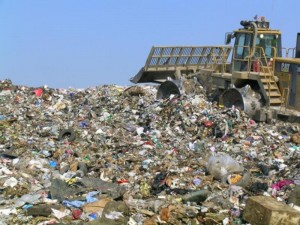
Layers of trash in a landfill
Americans dispose of 0.86 tons of trash per capita every day, about a ton a year. When construction and demolition debris and non-hazardous industrial wastes are included, the total increases to 1.82 tons per capita, about two tons a year. (This can be compared to more than 20 tons of greenhouse gases each year.) The United States is the number one trash producing country followed by China weighing in at 521 million tonnes.
In 2011, the United States generated 250 million tons of municipal solid waste and 545 million tons when including construction and demolition debris. That contrasts with the 1960 value of 88 million tons, a nearly 300% increase while population grew from 180 million to 312 million, less than a 50% increase.
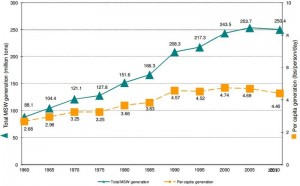
Waste generated1960-2011 – U.S. EPA
In 2010, 65 million tons of trash was recycled. In addition, 20 million tons of food and yard waste was composted, bringing the diversion rate to 85 million tons for a national diversion rate of 34.1%. The amount of diverted material results in a GHG savings of 186 million metric tonnes of CO2e annually. Another 29.3 million tons was combusted in waste-to-energy plants (WTE) in 2011, down from 33.7 million tons in 2000.
Worldwide production of municipal solid waste is on the rise due to rising prosperity. According to a 2012 World Watch Institute report, trash will double in the 2012 – 2025 timeframe from 1.3 billion tonnes to 2.6 billion. Currently, waste in developing countries is a fraction of that in OECD (Organization for Economic Cooperation and Development) nations, and its composition is different too, as increasing financial and material prosperity results in smaller and smaller shares of organics in the waste stream.
In developing countries, more than 60% of the waste stream is organic – and biodegradable. In the developed world, this percent drops to 25%. That said, of the top ten producing nations of MSW, Brazil, China, India, and Mexico are listed due to urbanization and wealth among the richest citizens. Conversely, Japan is noted for its waste minimization.
Trash and Recycling Facts
Thanks to “environmentalistseveryday.org,” the National Recycling Coalition, and the Energy Recovery Council, and others:
- The average American disposes 4.43 pounds of material every day
- The total volume of municipal solid waste in America has the weight of 2.3 million 747s
- If that same volume of waste were loaded into garbage trucks lined one after another, the line would cross the country 100 times from New York to Los Angeles
- There are 948,000 jobs in the solid waste industry in America
- Glass can be recycled indefinitely, cutting mining wastes each time by 70%, water use by 50%, and air pollution by 20%
- More than 86% of all Americans – 254 million strong –have access to curbside recycling programs
- The average American recycles 1.53 pounds of material every day
- Recycling has increased from 6% in 1960, to 34.7% in 2011
- If every newspaper were recycled on any given day, it would save 550,000 trees, fully 26 million per year
- 37% of the fiber in new paper products is recycled
- 113,204 aluminum cans are recycled every minute
- The average bag of kitchen trash has enough energy to lite a 100 watt light bulb for 24 hours
- 5 PET bottles provide enough fiber to fill one ski jacket

Waste Composition Studies
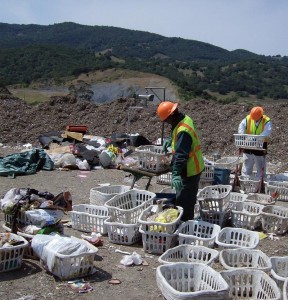
Sorting waste for a state-wide study
So what’s in municipal solid waste? The EPA reports that “MSW – otherwise known as trash or garbage – consists of everyday items such as product packaging, grass clippings, furniture, clothing, bottles, food waste, newspapers, appliances, and batteries. Not included are materials that may also be disposed of in landfills, including construction and demolition debris, municipal wastewater treatment sludges, and non-hazardous industrial wastes. The “waste stream” varies of course, be it suburban versus urban, or considered on an aggregated national or state, regional, or city basis.
The U.S. EPA 2010 report titled “Municipal Solid Waste Generation, Recycling, and Disposal in the United States” provides breakdowns and trends by decade. Its summary tables show the waste generated (in thousands of tons and in percentages), the amount recycled, and the “discarded” balance. It was updated for 2011.
Of the total waste generated in 2010, 249,860 thousand tons, or just shy of 250 million tons, 85,140 or 34.1% was recycled. The balance of 164,720 thousand of tons was discarded each year. Of the total, paper and paperboard was 71.3 million tons (28.5%), glass 11.53 (4.6%), metals 16.9 (6.8%), plastics 31,040 (12.4%), yard wastes (13.4%) food scraps (13.9%) with wood, textiles, leather and rubber, and miscellaneous inorganic waste materials.
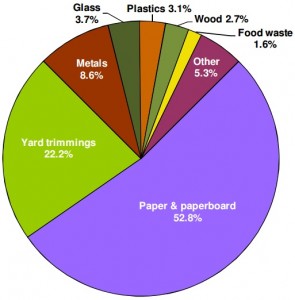
Materials recovered in 2011, 87 million tons
The State of Oregon Statewide Waste Composition study of 2009 provides detail. In broad categories, it found that paper was 16.99% of the waste stream, 11.56 % was plastic, while other organics (yard debris, construction and demolition wood material, exterior clipping, food etc. was fully half the stream, 50.21%, glass (1.95%), metal (6.98%), other inorganics (rock, concrete, etc.) at 11.09%, and hazardous materials (0.45%). Some interesting line items: disposable diapers (2.76%) about the same as rugs can i purchase tramadol online (2.63%); and food a whopping 16.99%.
The History of Styrofoam
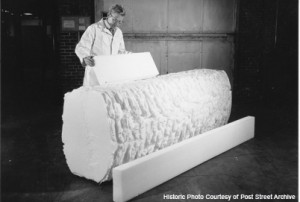
Ray McIntyre with his invention
In 1941, researchers in Dow’s Chemical Physics Lab found a way to make foamed polystyrene. Led by Ray McIntyre, they “rediscovered” a method first discovered by Swedish inventor Carl Georg Munters. Dow acquired exclusive rights to use Munters’ patents and found ways to make large quantities of extruded polystyrene as a closed-cell foam that resists moisture. Dow trademarked its building insulation products as Styrofoam, a term now incorrectly used to describe a class of products made from extruded and expanded polystyrene.
Styrofoam is composed of ninety-eight percent air, making it light weight and buoyant. Because of its insulating properties and buoyancy, it was adopted in 1942 by the United States Coast Guard for use in life rafts. In 1971, a Dutch marine salvage company used
Styrofoam balls to refloat part of a wrecked bulk carrier. The company succeeded in towing the wreck for about 90 miles before it sank.
In the years that ensued, polystyrene was put to use in many applications, from Styrofoam building products to packaging materials to coffee cups. In 1986, the EPA reported that styrene was the 5th largest creator of hazardous waste. The EPA and International Agency for Research on Cancer also determined that styrene is a possible human carcinogen. The National Bureau of Standards Center for Fire Research found 57 chemical by-products released during the creation of Styrofoam, and some 90,000 workers are exposed each year to its manufacturer and application.
Foam Food Packaging
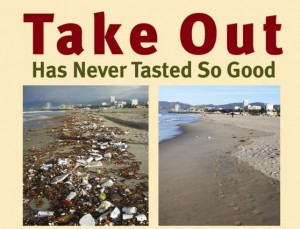
What banning can do in a beach community
Foam food packing – cups, plates, meat trays, egg cartons, fast food containers — is not technically Styrofoam. That’s a Dow Chemical branded building material that, like Xerox, has become generically used. Like Styrofoam (extruded polystyrene), the basic building block of foam food packaging is expanded styrene (XPS foam is made from polystyrene beads), a petroleum-based plastic. It generally accounts for less than a half a percent of a typical municipal solid waste stream, but its impact is widespread.
There are alluring aspects to foam food packaging: It is inexpensive, 30% the price of the alternatives, and it insulates well. In terms of its manufacture, a lifecycle assessment by Franklin and Associates found that polystyrene cups require a third less energy and 30% less water to produce (thus a third less GHGs) than their “sleeved paper peers.” Some say they are more sanitary than paper alternatives, citing health studies in San Francisco. One purported feature is their “high coefficient of friction” that keeps the product from slipping on the packaging. And there are recycling centers for foam food packing in California and across the country.
That said, San Francisco, Portland, Santa Monica, and other cities have banned them. They cite the U.S. EPA’s conclusion that the material, “can have serious impacts on human health, wildlife, and the aquatic environment.” The Berkeley Municipal Code, Chapter 11.60, “prohibits the use of styrofoam in restaurants.” Despite USDA approval for the polystyrene materials, these cities stand firm in their opposition to its broader environmental impacts.
Polystyrene foam food containers may now be New York Mayor Bloomberg’s next target. His “social engineering campaigns” have targeted smoking, trans-fats, salt, and soda. Bloomberg claims that the material is “virtually impossible to recycle as it never biodegrades.”
The debate continues on health issues, specifically the potential migration of styrene into food. Some say this does pose a health risk, while the industry claims that trace amounts of styrene are naturally present in food. Styrene foam can melt if the food is of sufficient temperature; some packaging is microwavable but must be labeled as such to be safe.
Recyclebank
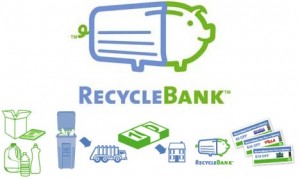 Recyclebank is “the company that rewards people for taking everyday green actions.”
Recyclebank is “the company that rewards people for taking everyday green actions.”In 2004, Recyclebank was founded by Patrick Fitzgerald and Ron Gonen. They began by serving two Philadelphia neighborhoods. Then Waste Management; Coca Cola; Kleiner, Perkins, Caufield, and Byers; and others put their financial muscle behind Recyclebank. According to its CEO Hsu, it is now “the largest consumer facing engagement platform for all things sustainability.”
Recyclebank is a firm with an innovative program through which registrants can earn points and redeem awards for their everyday eco-actions. These can include decreasing household trash, increasing energy efficiency at home, reducing water use, buying greener products, and even walking to work. Its website promotes its message: “Get Rewards, Learn, and Invite Friends.” “Learn and Earn” quizzes provide another way of earning points.
To date there are more than 4,000 reward partners and more than 4 million members. Recyclebank is a New York-based company with 180 employees and offices in Philadelphia and London, running programs in 75 communities where participants have earned more than $4 million in “RBank” rewards.
New Jersey Joins the Solar Gigawatt Club

Solar installations throughout the state of New Jersey
The Garden State has officially become the third state to break the threshold of 1,000 megawatts of solar capacity, joining California and Arizona in the Gigawatt Club. The feat is especially impressive considering the other states. First, they are much larger in size. Second, they’re located directly in the country’s Sunbelt where solar energy is more advantageous.
“Reaching the one gigawatt of solar capacity milestone is an incredible achievement,” said N.J. Governor Chris Christie. There are over 20,000 separate projects statewide, including over 15,000 residential, 3,000 commercial, 300 school, and 200 government installations spanning across rooftops, carports, landfills, and brownfields.
The San Onofre Nuclear Plant
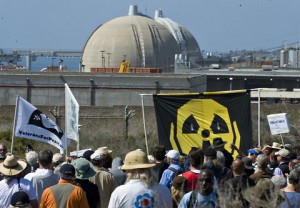
Protests outside San Onofre
The San Onofre Nuclear Generating Station (SONGS) is now slated to be shut down. Unit 1 was built in 1968 and retired in 1992 after 24 years of services. Units 2 and 3 were built in the 1980s and were licensed to operate until 2022. But just weeks ago, on June 7th, and after 16 months of regulatory wrangling, after $768 million in investments in 2012, Southern California Edison announced that it would permanently close the plant. No more distribution of iodine tablets there.
San Onofre is known for its ominous concrete domes. Its 1,500 workers were integrated into the communities surrounding the plant. Now 1,100 will lose their jobs, 400 will be involved in the plant’s decommissioning. Property values in the area may rise.
Public sentiment turned against the plant after the 2011 Fukushima Daiichi nuclear disaster in Japan. Then a tube in one of the newly installed steam generators sprung a small leak of radioactive gas. Then unusual wear on hundreds of other tubes was discovered, leading to a lengthy and complex regulatory process. For 16 months the plant sat idle. Ultimately Edison asked permission to restart to 70% power. The public requested that there be a plan for storage of the spent fuel offsite before the plant was licensed to restart. More delays.
With the closure of San Onofre, the U.S. fleet of reactors shrinks to 100 reactors. And several others are “under fire” including Vermont Yankee, Pilgrim on Cape Cod, and the Indian Point reactors just north of New York City. Five new units are in permitting and construction phases.
While local residents cheer the plant’s closure, the lost capacity will have a negative impact on the State of California’s progress reducing greenhouse gas emissions. If the plant’s output were replaced with a mix of renewables and gas, the increased emissions would be 4 million tonnes per year, about 1% of the State’s total emissions. If the energy is replaced with 100% natural gas, there would be some 6 million tonnes of increased emissions.
World Primary Energy Demand
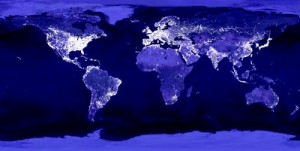 Global energy consumption of primary energy has grown 30% in the past decade according to the 2013 BP Statistical Review. And almost all of the growth has come from the developing world. BP has been publishing the Statistical Review for 62 years.
Global energy consumption of primary energy has grown 30% in the past decade according to the 2013 BP Statistical Review. And almost all of the growth has come from the developing world. BP has been publishing the Statistical Review for 62 years.
For four of the past five years, OECD nations’ energy use has decreased. In 2012, energy use in OECD nations was reduced by 1.2% while economic output grew by 1.4%. Oil consumption peaked in the OECD in 2005. While BP says that it is too early to tell, it appears that “peak energy” has already occurred in developed countries.
